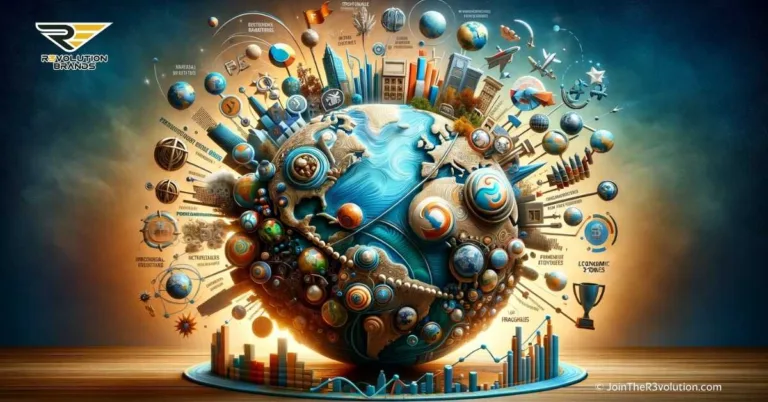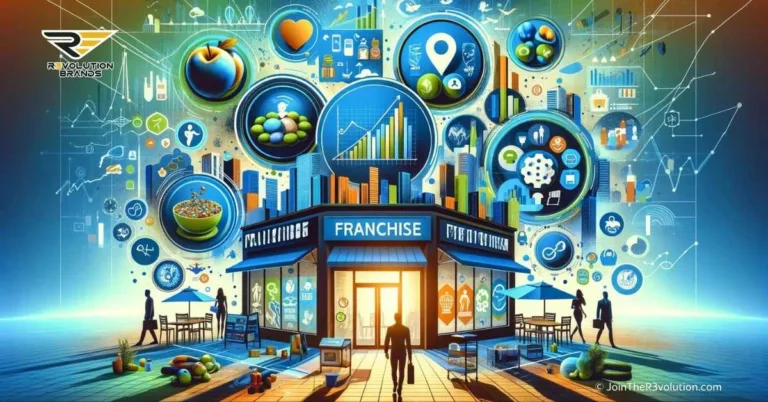The retail industry is undergoing a significant transformation as e-commerce continues to dominate the market. However, brick-and-mortar businesses are not dead, and they continue to evolve to match consumer tastes and demands.
Retail businesses have been integrating technology while adopting sustainability practices to increase their profits.
With this in mind, it’s essential to examine the emerging trends that are shaping the future of physical retail, including how technology is being integrated into brick-and-mortar businesses and the implementation of sustainable practices.
Emerging Trends Shaping the Future of Physical Retail
Despite the boom of online shopping, physical retail continues to play an important role in the industry. However, retailers need to remain current and adapt to new trends to stay relevant.
The Evolution of the In-Store Experience
In the past, most people visited stores to purchase products and compare prices. However, consumers these days want more from their shopping experiences.
Retailers must create a unique and memorable in-store experience that resonates with the consumer. This experience could include interactive displays that allow consumers to try on clothing or test out gadgets.
In-store experiences could also include events featuring live music, art exhibitions, or even fitness classes. Retailers are now transforming their stores into community hubs that offer more than just a place to buy goods or services, but somewhere where people can hang out, share experiences, and connect with others.
The Rise of Pop-Up Shops
Pop-up shops have become increasingly popular in recent years. The temporary retail spaces are perfect for new and emerging retailers and offer established retail businesses a way to test new products and markets.
Pop-up shops provide a way for retailers to reach out to customers in a new area or try out different concepts without making an extensive financial commitment.
In addition, pop-up shops generate hype. Since they are temporary, there is a sense of urgency associated with shopping at a pop-up shop. Customers may also associate short-term availability with exclusivity and the idea of finding something unique that won’t be found anywhere else.
Optimizing for Mobile Devices
With the rise of smartphones, mobile devices have changed the way consumers shop. Now, consumers are using their mobile devices to check prices, read reviews, and make purchasing decisions on the go.
Retailers that can optimize their websites and in-store experiences for mobile devices have an edge over their competition.
One way to optimize for mobile devices is through the use of social media platforms. These platforms allow businesses to connect with consumers in real-time, offering behind-the-scenes access to their businesses, exclusive promotions, and discounts that are available for a limited time.
Engaging with consumers through social media on their mobile devices can help keep retailers at the forefront of their minds.
Integrating Technology in Brick and Mortar Models
Technology has transformed the way many industries operate, and the retail industry is no exception. The integration of technology in brick-and-mortar businesses is essential to their continued success.
The use of technology can help retailers reduce costs, streamline operations, and improve the customer experience.
The Use of Augmented Reality and Virtual Reality

Augmented reality and virtual reality technologies are revolutionizing the in-store experience. These technologies offer an immersive experience that can help customers more fully understand a product before purchasing it.
AR and VR technologies can provide retailers with a unique opportunity to engage with their customers in a new and innovative way, providing a competitive advantage in the constantly evolving retail industry.
Artificial Intelligence and Machine Learning
Artificial intelligence (AI) and machine learning are taking the retail industry by storm. Retail businesses are utilizing AI and machine learning to offer personalized recommendations, tailor promotions, and improve inventory management.
AI and machine learning algorithms gather vast amounts of data about customers and their preferences, contributing to more personalized shopping experiences that help broaden customer loyalty.
Contactless Payment Systems
In the age of the pandemic, contactless payment systems have become increasingly popular as customers move towards more convenient and safer shopping experiences.
Many retailers have implemented contactless payment systems, ranging from mobile wallet services to contactless credit cards. Contactless payment systems enable quicker checkout times, decreased customer interaction with payment surfaces, and enhanced customer experiences.
Sustainable Practices in Modern Retail Businesses
Another critical aspect of the evolving brick-and-mortar business model is the increasing focus on sustainability.
Consumers today are more aware and concerned about the environmental impact of their purchasing decisions, and retailers are taking note. The following are some emerging sustainable practices in modern retail businesses:
Environmentally Friendly Products and Packaging
As consumer awareness of the environment and the planet’s health increases, retailers are now offering environmentally friendly products and packaging as a way to minimize their carbon footprint. Offering biodegradable or compostable packaging helps reduce the amount of waste that ends up in landfills, and ultimately helps mitigate environmental damage.
Additionally, the products that these retailers sell must also highlight their commitment to eco-friendliness. Offering sustainable products can increase customer loyalty and tap into a vast, growing market of environmentally conscious customers.
Recycling and Composting Programs
Retail businesses can also make an impact by implementing recycling and composting programs within their stores. Recycling programs aim to reduce the amount of waste that ends up in landfills by converting recyclable materials into new products.
Composting programs, on the other hand, focus more on reducing organic waste and converting it into nutrient-rich soil.
Consumers are becoming more concerned with where their waste ends up, so offering in-store recycling and composting programs can help boost customer confidence in the retailer’s sustainability commitments.
Reducing Carbon Footprints
As the global population increases so does the use of resources and greenhouse gas emissions associated with things like transportation, energy use, and waste disposal. Retailers can take several steps to reduce their carbon footprint, including using renewable energy to power their stores, embracing energy-efficient design, and sourcing supplies locally to decrease emissions related to transportation.
By reducing their carbon footprint, businesses can demonstrate their commitment to sustainability and gain positive community sentiment.
Experiencing the Future of Physical Retail
Physical retailers must evolve with changing customer preferences and leverage emerging trends to remain relevant and competitive. The integration of new technologies can help retailers streamline operations and create more personalized shopping experiences.
Sustainability practices are also critical in modern retail businesses as more environmentally conscious customers demand eco-friendly products and packaging. Therefore, businesses should tap into evolving trends such as environment-friendly products, in-store recycling programs, and carbon footprint reduction initiatives.
As the retail industry adapts to these emerging trends, brick-and-mortar stores stand to play an even more critical role in the lives of consumers who value the tangible, in-store experience. With a combination of evolving technology, an eco-friendly mindset, and increased attention to the customer experience, physical retailers have the potential to thrive and stand out from their online counterparts.





